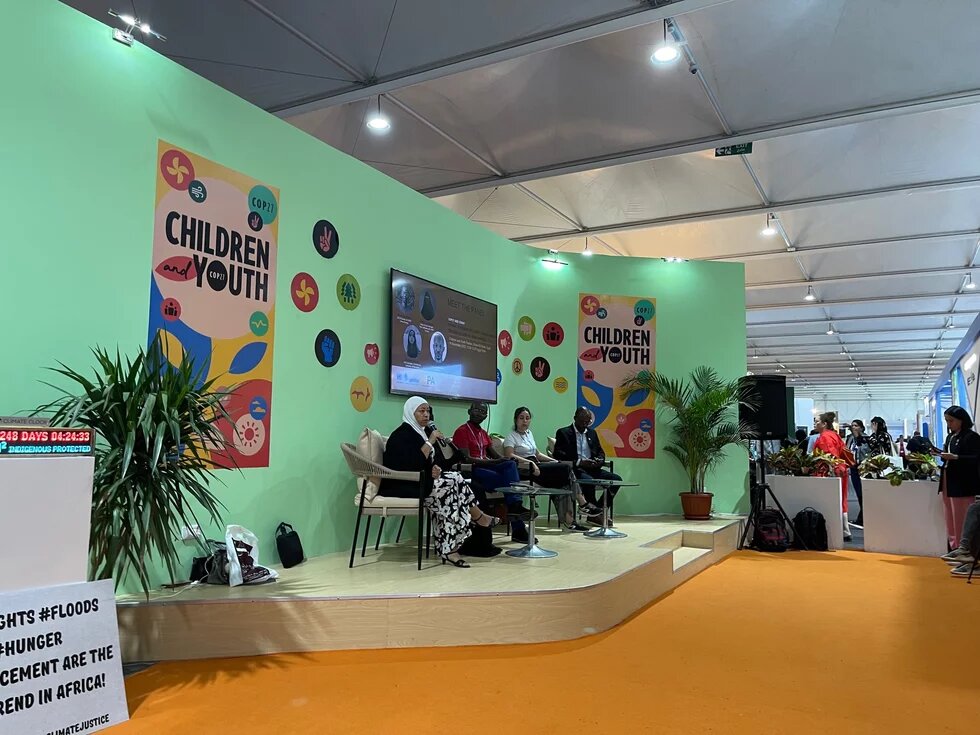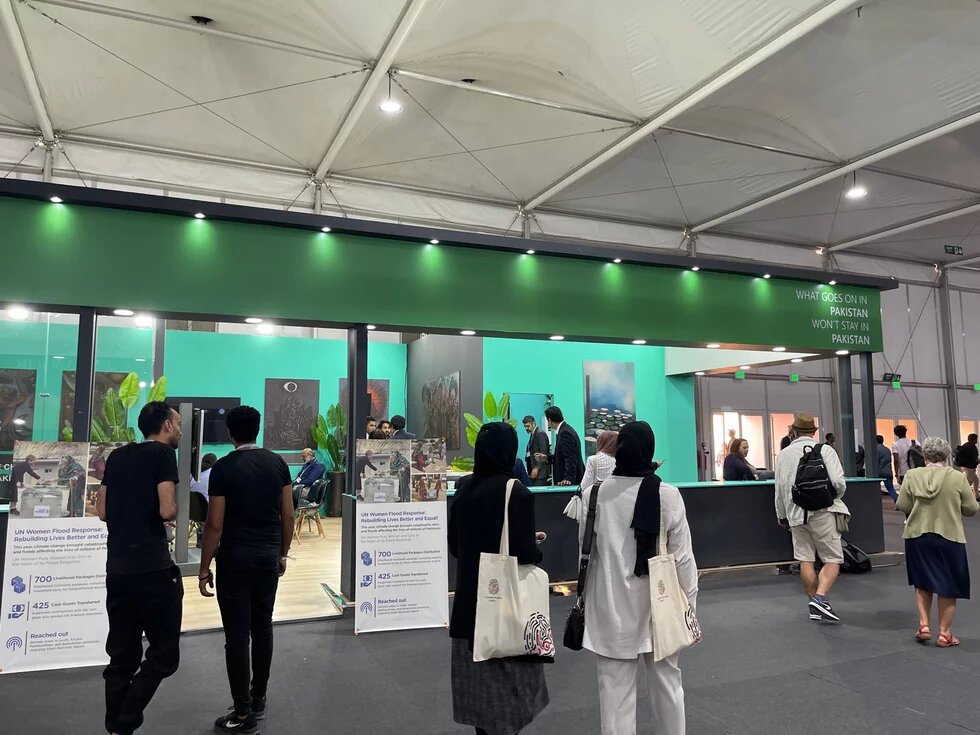
An agreement on “Loss and Damage” is the only saving grace for COP27 that has nothing new to offer on reducing greenhouse gases.

Held in Sharm el Sheikh in Egypt this November, the UN Climate Change Conference 2022 or COP27 (27th meeting of the Conference of Parties signatory to the United Nations Framework Convention on Climate Change) turned out to be a strange and subdued COP with nothing new to offer on ambition to reduce greenhouse gas emissions globally. This year’s COP was branded the “implementation COP” but the only bright spot was an agreement on loss and damage (compensation for poor countries reeling under the impacts of climate change, which they did not cause).
According to the concluding statement issued by the UN Secretary General, Antonio Guterres, “We need to drastically reduce emissions now – and this is an issue this COP did not address.”A year earlier at the last COP in Glasgow, countries had agreed to keep the 1.5 degree Celsius goal only just alive. At Glasgow in the final hours, nations had agreed to return to Egypt to revise their national targets in line with the 1.5 degree Celsius goal, but no concrete steps were taken at COP 27. Instead the COP27 cover text, which summarises the key decisions agreed upon by 197 countries signatory to the UNFCCC, only mentions that more efforts must be made to keep global warming under 1.5 degree Celsius.
UN scientists believe that global warming temperatures breaking the 1.5 degree target will see major climate change catastrophes taking place in several different countries such as severe droughts and killer heat waves.
According to the UN’s Intergovernmental Panel on Climate Change, human activity has already caused approximately 1.2 degree Celsius of global warming above pre-industrial levels. If warming continues at its current rate, temperatures will reach 1.5 degree Celsius above these levels between 2030 and 2052, leading us all to disaster.
No large protests allowed
No public protests were allowed in the sleepy beachside town of Sharm el Sheikh, a long strip of resort hotels along the Red Sea. Security was everywhere from the airport to the hotels to inside the conference venue; Egypt is after all a dictatorship where no dissent is allowed. The youth were given their own pavilion inside the Blue Zone (where the negotiations were held and the country pavilions placed) and it was a bustling, colourful place but their voices were not as loud as in earlier COPs. Youth climate activist Greta Thunberg boycotted this COP, condemning human rights abuses in Egypt.
Small protests did occur inside the sprawling Blue Zone venue in the centre of town, especially at the entrance but the youth climate marches, which had brought fresh energy to the COPs, did not take place this year.
Many experts agree that while there is no alternative to the long, drawn out UN climate negotiations (a consensual process), these protests can certainly focus the minds of the leaders and politicians by sending a signal that the whole world is demanding real and urgent climate action, not just empty targets with no plans to meet them.
Instead of increasing space for youth, there were over 600 lobbyists from oil and gas companies who were working quietly behind the scenes to influence the negotiators – a 25 per cent increase from the 2021 summit in Glasgow.The conference itself was mainly sponsored by Coca Cola, one of the biggest polluters of plastic waste, who were handing out free Coca Cola at the venue (when drinking water ran out at the venue in the first week, delegates were forced to drink the soda!).
Spotlight on “Loss and Damage”
The spotlight at this year’s COP, held at the end of a year of severe climate disasters across the world including Pakistan, was on “Loss and Damage”. Negotiations dragged on until the dawn of 20 November (the conference was due to end on 18 November), when finally the establishment of a fund to pay poor nations for the loss and damage they are suffering due to climate change was announced at the plenary.
Vulnerable countries like Pakistan, who are reeling under climate change impacts like biblical floods, intense hurricanes and rising sea levels, which threaten their very existence, had come to COP27 determined to get the world to agree to a “Loss and Damage Finance Facility”.
“Loss and damage” has been a contentious issue at the COPs for more than 30 years now. Harjeet Singh, head of global political strategy at Climate Action Network International, has been lobbying for loss and damage for decades. He described it as a “black hole in climate finance, which needed to be plugged”. He said the establishment of the fund now “offers hope to the vulnerable people that they will get help to recover from climate disasters and rebuild their lives”. Harjeet Singh, along with veteran Bangladeshi climate expert Saleemul Huq, head of the Dhaka-based International Centre for Climate and Development, earlier spoke on loss and damage at the Pakistan pavilion along with Sherry Rahman, Pakistan’s current Federal Minister for Climate Change. The panel discussion was titled “The Broken Bargain between the North and the South” and the participants on the panel had agreed that the bargain between the Global North and South needed a reset, and that COP27 offered that opportunity.
This year, Pakistan had been elected chair of the Group of 77 plus China, which is the largest intergovernmental grouping of developing countries in the United Nations. This was thanks to the efforts of Pakistan’s Ministry of Foreign Affairs, whose officials also played an important role at the COP as negotiators. Particularly, chief negotiator for Pakistan, Ambassador Nabeel Munir, kept the G77 group together at the COP, ensuring that there were no divisions.
Munir, a career diplomat, was backed by a team of competent negotiators who were spurred on by the devastation from the recent floods, which have caused $30 billion of damage in Pakistan. According to him, “Loss and damage is not charity, it’s about climate justice.” Indeed the sign outside the Pakistan pavilion at the COP noted that: “What goes on in Pakistan won’t stay in Pakistan.”
As chair of G77 plus China, Pakistan successfully tabled the contested idea of loss and damage onto COP27’s agenda. According to Sherry Rehman, “The UN Secretary General is advancing the cause of climate justice along with the UNFCCC, and it is time for developed countries to also acknowledge this call.”
Hard earned win for Global South
For nearly two weeks of the conference, however, the EU and the US refused demands from poor countries for the new fund to address loss and damage, arguing that existing funds should be redirected for the purpose. Then on Friday morning, the last day, the EU agreed to a fund on the condition that big economies (and polluters) still classed as developing countries should be included as potential donors, and excluded as recipients.
Many saw this as an attempt to divide developing countries and resisted the move. The US finally agreed to the fund on 19 November. Then in the early hours of 20 November, the negotiators agreed on a compromise – vulnerable countries would be prioritised, and the door was open to voluntary contributions from countries still classed as developing countries such as China and the Gulf states.
Negotiators say it is likely to take at least a year, until the next COP, to be held in the United Arab Emirates in November 2023, to sort through the details of how the fund can work. There is also little money for the fund so far.
According to climate expert and Pakistani academic, Adil Najam, “Importantly, for now, developing countries got what they wanted: A fund for loss and damage. And developed countries were able to avoid what they have always been unwilling to give: Any concrete funding commitments or any acknowledgment of responsibility for reparations. Both can go home and declare victory. But not for long.”
He warns that it could turn out to be another ‘placebo fund’, pointing out that in 2001, for example, “developing countries had been delighted when three funds were established: A climate fund to support least developed countries, a Special Climate Change Fund, and an Adaptation Fund. None ever reached the promised scale”.
Climate finance expert Kashmala Kakakhel, who served as a negotiator on the Pakistani delegation at COP27, says: “Whether COP27 was a success or a failure depends on which side of the world you ask. The Egyptian Presidency had promised an implementation COP, and they delivered for developing countries.”
She adds: “While many in Pakistan and other countries are claiming this fund is an empty shell, with little or no benefit to the vulnerable, (they) are not appreciative of how a multilateral process unfolds. A political decision to set up a fund for loss and damage from rich countries took 30 years. It’s a moment worth celebrating. However, developing countries need to keep their eye on the ball. They have to ensure the Transitional Committee delivers in line with its needs when it presents its structure of the fund at COP28.”
Loss and damage had been the only real expectation from COP27 and it was driven by the Global South – developed countries have now consistently failed to deliver their climate finance obligations and are backtracking on their own commitments. With the economic downturn wrought by the pandemic and the Ukraine war, 45 per cent cuts in carbon emissions by 2030 that scientists say is needed to cap global temperature rise at 1.5 C above pre-industrial levels are nowhere in sight.
In his final statement at the conclusion of COP27, UN Chief Guterres noted: “A fund for loss and damage is essential – but it’s not an answer if the climate crisis washes a small island state off the map – or turns an entire African country to desert. The world still needs a giant leap on climate ambition. The red line we must not cross is the line that takes our planet over the 1.5 degree temperature limit. To have any hope of keeping to 1.5 (degree Celsius), we need to massively invest in renewables and end our addiction to fossil fuels.”